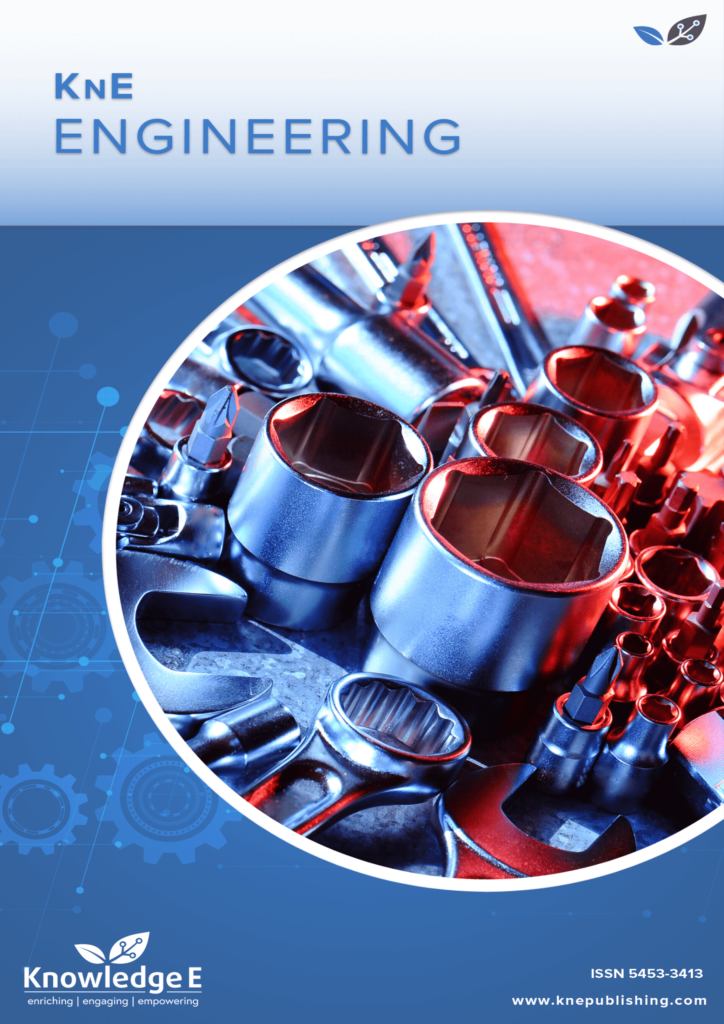
KnE Engineering
ISSN: 2518-6841
The latest conference proceedings on all fields of engineering.
Structural and Textural State of a Corrosion-Resistant Super Alloys Ni–Cr–Mo System after Deformation
Published date:Apr 15 2019
Journal Title: KnE Engineering
Issue title: XIX International scientific-technical conference “The Ural school-seminar of metal scientists-young researchers”
Pages:281–287
Authors:
Abstract:
The structural and textural state of the nickel-based alloy (Ni–Cr–Mo) after cold rolling with degree of strain ∼ 0.7 was investigated by means of electron backscatter diffraction (EBSD). It is shown that a multicomponent texture is formed during the deformation, including orientations: strong {110} < 112 >, and weaker {110} < 001 > and {110} < 111 >. The structure contains band elements of the mesostructure, which can be interpreted as deformation twins and shear bands. The orientation of the crystal lattice in all bands formed in grains with the main component of the texture ∼ {110} < 112 > is close to {110} < 001 >. This orientation is connected to the matrix, by turning at an angle of 70 ∘ around the transverse direction. It corresponds to the twin disorientation or the coincidence site lattice special (CLS) Σ3 (60∘ , оcь < 111 >). It is shown that all band elements of the mesostructure in the alloy are formed by the mechanism of deformation twinning. Moreover, the special disorientation formed at the beginning of the process (the special boundary Σ3), is preserved in the deformation process as an energy stable object.
Keywords: FCC-metal, cold rolling, twinning, shear bands, texture.
References:
[1] R. Penelle, T. Baudin, Primary recrystallization of invar, Fe – 36% Ni alloy: Origin and development of the cubic texture, Adv. Eng. Mater. 12 (2010) 1047–1052. DOI:10.1002/adem.201000077
[2] Y.V. Khlebnikova, D.P. Rodionov, I.V. Gervas’eva, et al., Perfect cubic texture, structure, and mechanical properties of nonmagnetic copper-based alloy ribbon substrates, Tech. Phys. 60 (2015) 389–399. DOI: 10.1134/S1063784215
[3] M.A. Zorina, M.L. Lobanov, E.A. Makarova, G.M. Rusakov, Primary recrystallization texture in FCC-Metal with low packing defect energy, Met. Sci. Heat Treat. 60 (2018) 329–336. DOI:10.1007/s11041-018-0280-8
[4] H. Paul, M.M. Miszczyk, Deformation microstructure and texture transformation in fcc metals of medium-to-high stacking fault energy: critical role of micro- and macroscale shear bands, Arch. Metall. Mater. 60 (2015) 2235-2246 DOI: 10.1515/amm-2015- 0369
[5] M.A. Zorina, M.S. Karabanalov, S.I. Stepanov, S.L. Demakov, Yu.N. Loginov, M.L. Lobanov, Fiber vs Rolling Texture: Stress State Dependence for Cold-Drawn Wire, Metall. Mater. Trans. A. 49 (2018) 427–433. DOI: 10.1007/s11661-017-4423-0
[6] . W.Y. Yeung, B.J. Duggan, Shear band angles in rolled F.C.C. materials, Acta Metall. 35 (1987) 541-548. DOI: 10.1016/0001-6160(87)90259-8
[7] H. Paul, J.H. Driver, Z. Jasieński, Shear banding and recrystallization nucleation in a Cu-2% Al alloy single crystal, Acta Mater. 50 (2002) 815-830. DOI: 10.1016/S1359- 6454(01)00381-0
[8] J.F.W. Bishop, R. Hill, A theory of plastic distortion of a polycrystalline aggregate under combined stresses, Philos. Mag. 42 (1951) 414-427.
[9] M. Hölscher, D. Raabe, K. Lücke, Relationship between rolling textures and shear textures in f.c.c. and b.c.c. metals, Acta Metall. Mater. 42 (1994) 879-886. DOI: 10.1016/0956-7151(94)90283-6
[10] M.L. Lobanov, Yu.N. Loginov, S.V. Danilov, M.A. Golovin, M.S. Karabanalov, Effect of Hot Rolling Rate on the Structure and Texture Condition of Plates of the Al-Si-Mg Alloy System, Met. Sci. Heat Treat. 60 (2018) 322-328. DOI: 10.1007/s11041-018-0279-1
[11] P. Wagner, O. Engler, K. Lücke, Formation of Cu-type shear bands and their influence on deformation and texture of rolled f.c.c. {112} <111> single crystals, Acta Metall. Mat. 43 (1995) 3799-3812. DOI: 10.1016/0956-7151(95)90164-7
[12] G.M. Rusakov, A.A. Redikultsev, M.L. Lobanov, Formation mechanism for the orientation relationship between {110} <001> and {111} <112> grains during twinning in Fe-3 pct Si alloy, Metall. Mat. Trans. A. 39 (2008) 2278–2280. DOI: 10.1007/s11661- 008-9575-5
[13] G.M. Rusakov, A.A. Redikul’tsev, M.L. Lobanov, A.I. Gomzikov, On the Possibility. of Formation of Domains with {110} <001> Orientation during Cold Deformation of Commercial Fe–3% Si Alloy, Phys. Met. Metall. 101 (2006) 600–606. DOI: 10.1134/S0031918X06060135
[14] H. Yan, X. Zhao, N. Jia, Y. Zheng, T. He, Influence of shear banding on the formation of brass-type textures in polycrystalline fcc metals with low stacking fault energy, J. Mater. Sci. Technol. 30 (2014) 408-416. DOI: 10.1016/j.jmst.2013.11.010
[15] G.M. Rusakov, M.L. Lobanov, A.A. Redikul’tsev, I.V. Kagan, Specific Features of Cold Deformation of a (110)
[16] Single Crystal of an Fe–3% Si–0.5% Cu Alloy Related to Twinning, Phys. Met. Metall. 111 (2011) 530-536. DOI: 10.1134/S0031918X11040119
[17] G.M. Rusakov, M.L. Lobanov, A.A. Redikultsev, I.V. Kagan, Retention of the Twinning Σ3 Disorientation in the Process of Lattice Transformation during Cold Rolling of a Fe3pctSi Single Crystal, Metall. Mat. Trans. A. 42 (2011) 1435-1438. DOI: 10.1007/s11661-011-0684-1
[18] A. Albou, M. Galceran, K. Renard, S. Godet, and P. J. Jacques, Nanoscale characterization of the evolution of the twin-matrix orientation in Fe–Mn–C twinninginduced plasticity steel by means of transmission electron microscopy orientation mapping, Scr. Mater. 68 (2013) 400–403. DOI:10.1016/j.scriptamat.2012.10.052